Pronunciation:
(OH-fee-U-kus)Abbreviation:
OphGenitive:
OphiuchiiRight Ascension:
17 hoursDeclination:
0 degreesArea in Square Degrees:
948Crosses Meridian:
9 PM, July 25Visible Between Latitudes:
80 and -80 degreesThe constellation Ophiuchus, the snake bearer, is best seen in summer in the northern hemisphere and winter in the southern hemisphere. It is completely visible at latitudes between 80 degrees and -80 degrees. It is a large constellation covering 948 square degrees of the sky. This makes it the 11th largest constellation in the night sky. It is located between Aquila, Serpens and Hercules, northwest of the center of the Milky Way. The southern part lies between Scorpius to the west and Sagittarius to the east. It is one of the thirteen constellations of the zodiac. This means it lies along the path the Sun travels in the sky during the year. When the Babylonians invented the Zodiac about 300 years ago, it only contained 12 constellations. Because of the procession of the Earth's axis, the Sun now passes through Ophiuchus each year in December, making it a new member of the Zodiac by definition.
Ophiuchus is one of the 48 constellations listed by the Greek astronomer Ptolemy in the second century. It is an ancient constellation that has been known by many ancient cultures. The Babylonians knew it as the serpent-god Nirah. The ancient Greeks identified it as the god Apollo struggling with the giant snake that guarded the Oracle of Delphi. It is frequently associated with the Greek figure Asclepius, son of the god Apollo, who was said to be able to bring people back from the dead. Serpents were always associated with physicians, and this has given rise to the modern symbol for medicine. Ophiuchus is commonly depicted as a man holding a snake, represented by the nearby constellation Serpens.
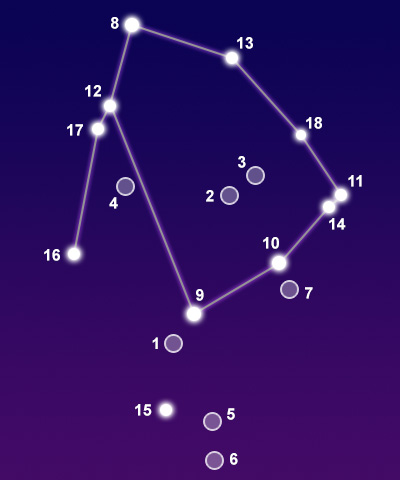
points of interest below © Sea and Sky
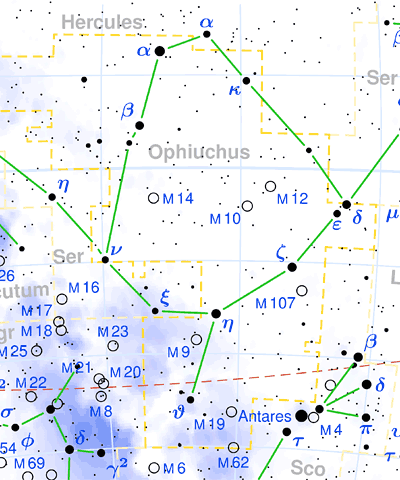
© Torsten Bronger CC BY-SA 3.0
M10
M12
M14
M19
M62
M107
Rasalhague
Sabik
Han
Yed Prior
Cebalrai
Kappa Ophichi
Yed Posterior
Theta Ophichi
Sinistra
Gamma Ophichi
Marfic
N/A
N/A
N/A
N/A
N/A
N/A
"Head of the Serpent Charmer"
"The Preceding One"
Chinese State of Han
"Western Hand"
"Dog of the Shepherd"
N/A
"Eastern Hand"
N/A
"Left Side"
N/A
"The Elbow"
Globular Star Cluster
Globular Star Cluster
Globular Star Cluster
Globular Star Cluster
Globular Star Cluster
Globular Star Cluster
Binary Star System
Binary Star System
Blue Subgiant Star
Red Giant Star
Orange Giant Star
Orange Giant Star
Red Giant Star
Multiple Star System
Orange Giant Star
White Dwarf Star
Binary Star System
6.60
6.70
7.60
6.80
6.50
7.90
2.07
2.43
2.57
2.75
2.76
3.20
3.23
3.26
3.33
3.75
3.90
Ophiuchus contains the second closest star to Earth, known as Barnard's star. It is a red dwarf star located only 6 light years away. With a magnitude of only 9.5, it is not an easy star to find with the naked eye. The brightest star in this constellation is Rasalhague with a visual magnitude of 2.07. It is a binary star system located about 48 light years from Earth. The second brightest star is Sabik with a magnitude of 2.43. It is also a binary star system. Sabik is about 88 light years away. Han is the third brightest star with a magnitude of 2.57. It is a blue subgiant star that lies 366 light years from our solar system.
Ophiuchus contains seven Messier objects, all of which are globular star clusters. These clusters contain tens of thousands of stars bound tightly by gravity. They orbit the galactic core of our Milky Way galaxy. The stars they contain are much older than the stars in the galactic disk. Other notable deep-sky objects in this constellation include the Little Ghost Nebula (NGC 6369), the Dark Horse Nebula, the Pipe Nebula, the Snake Nebula, the Twin Jet Nebula, and a dark molecular cloud known as Barnard 68. Most of these objects can only be seen with large telescopes.
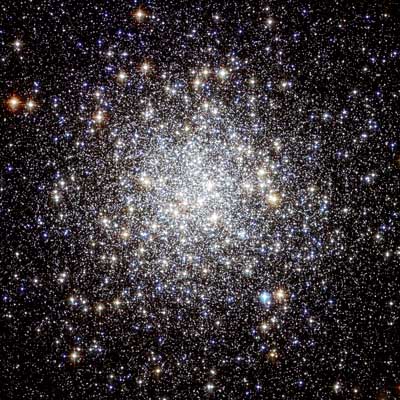
© NASA & ESA / CC BY 4.0
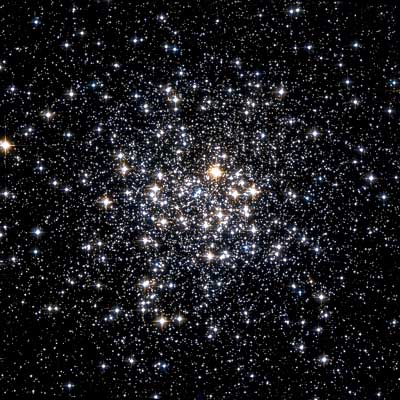
the Hubble Space Telescope
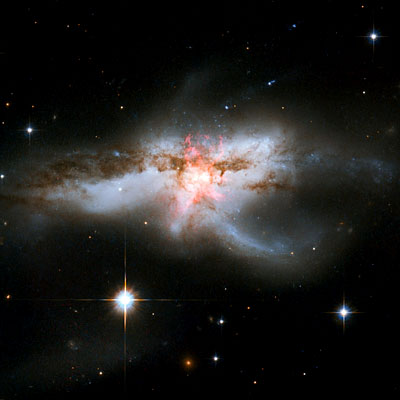
© ESA/Hubble / CC BY 4.0
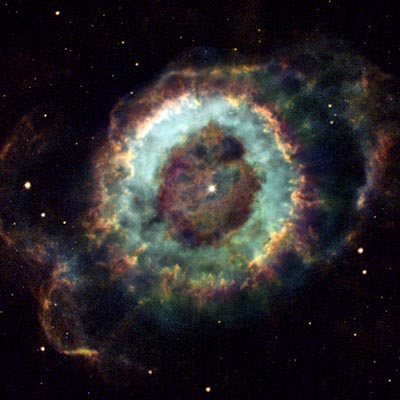
the Hubble Space Telescope



